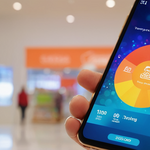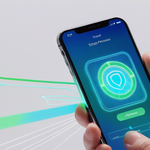
Virtual Private Networks (VPNs) have emerged as critical tools for organizations seeking to comply with stringent data protection regulations such as the Health Insurance Portability and Accountability Act (HIPAA) in the United States and the General Data Protection Regulation (GDPR) in the European Union. While neither regulation explicitly mandates the use of VPNs, both frameworks require organizations to implement appropriate technical and organizational measures to protect sensitive personal and healthcare data. This comprehensive report explores the multifaceted relationship between VPN gateways, privacy, security, and regulatory compliance, examining how organizations can leverage VPN technology to meet the stringent requirements of HIPAA and GDPR while understanding the limitations and challenges inherent in VPN-based compliance strategies. The analysis reveals that effective VPN compliance requires not only strong encryption and authentication mechanisms but also complementary organizational measures, comprehensive audit logging, proper Business Associate Agreements (BAAs), and ongoing risk assessment to address the dynamic threat landscape and evolving regulatory expectations.
Understanding Virtual Private Networks and Their Security Architecture
A virtual private network represents a fundamental technology that creates secure, encrypted connections between devices and networks over the internet by establishing what is commonly called a “tunnel” between communicating parties. The VPN operates by routing user traffic through encrypted channels that prevent interception and unauthorized access to sensitive information transmitted over public networks. When users connect to a VPN, the technology masks their original IP address and encrypts all data passing through the connection, making it significantly more difficult for malicious actors to identify users or access their communications. This encryption-based approach has become essential for organizations where employees work remotely or need to access corporate resources from various geographic locations without compromising data security.
The fundamental purpose of VPN technology extends beyond simple encryption to creating a functional barrier between user devices and potentially hostile network environments. Modern VPNs operate across multiple layers of the network stack, with different VPN protocols offering varying levels of security and performance characteristics. A VPN gateway serves as the central architectural component that enables these encrypted connections by functioning as a network device that creates secure connections between users, online applications, networks, repositories, and other systems. The VPN gateway essentially forms the central node of a virtual private network and facilitates secure data transfer over the internet, allowing authorized users to securely communicate with systems without exposing sensitive information to unauthorized parties.
VPN technology operates through a series of technically sophisticated processes that ensure data remains protected throughout transmission. When establishing a connection, VPN gateways perform authentication procedures to verify user identity before granting access to the private network. These authentication mechanisms might include trusted certificates installed on user devices, credential-based entry through client applications, or more advanced methods such as two-factor authentication that provide enhanced security. Following successful authentication, the VPN gateway assigns an IP address—often a static one—that uniquely identifies the gateway and facilitates remote access capabilities including IP whitelisting and other security operations. The gateway then manages DNS resolution to direct traffic over the internet appropriately and may incorporate advanced DNS filtering to protect against threats like phishing and malware attacks.
VPN Gateway Architecture and Technical Components
The technical architecture of VPN gateways represents a sophisticated system designed to balance security, performance, and accessibility for remote users and inter-site communications. A VPN gateway can function as either a hardware device or increasingly common in modern deployments, a virtual device accessible through cloud infrastructure. The gateway’s primary responsibility involves creating secure encrypted tunnels between senders and receivers using various VPN protocols including OpenVPN, IPsec, and Internet Key Exchange (IKE) and IKEv2. The selection of protocol significantly impacts both the connection speed and the encryption strength achieved, with different protocols excelling at different operational tasks depending on organizational requirements.
The technical implementation of VPN encryption relies on sophisticated cryptographic protocols that transform plaintext data into unreadable ciphertext that only authorized recipients can decrypt. IPsec VPN protocols utilize several component protocols to accomplish secure communication, including the Authentication Header (AH) which provides packet authentication and integrity checking, the Encapsulating Security Payload (ESP) which provides both confidentiality and data integrity, and the Internet Security Association and Key Management Protocol (ISAKMP) which establishes security associations between communicating parties. Modern VPN implementations increasingly employ the Internet Key Exchange protocol for key management and authentication, using the Diffie-Hellman algorithm to generate shared secret keys that encrypt traffic between hosts.
The operational characteristics of VPN gateways include several critical security functions beyond basic tunneling capability. Access control represents a fundamental feature that allows administrators to define and enforce user access rights, minimizing potential cybersecurity risks by restricting which users can access particular resources through the VPN. Deep packet inspection capabilities enable comprehensive review of data transmitted across networks, potentially allowing administrators to block specific ports or protocols to enhance security. However, traditional VPN gateways increasingly face limitations compared to emerging technologies such as SASE (secure access service edge) and SD-WAN (software-defined wide area network) solutions, which often integrate VPN technology alongside broader security functionalities.
HIPAA Regulatory Framework and Technical Safeguard Requirements
The HIPAA Security Rule establishes comprehensive technical safeguard requirements that healthcare organizations must implement to protect electronic protected health information (ePHI) without prescribing specific technologies that organizations must deploy. This regulatory approach reflects policymakers’ recognition that security landscapes continuously evolve and that imposing specific technological mandates would quickly become obsolete. The Security Rule requires healthcare providers and their business associates to implement reasonable and appropriate technical safeguards based on factors including the nature, scope, context, and purposes of processing, as well as the likelihood and severity of risks to individual rights and freedoms.
HIPAA’s technical safeguard standards specifically address transmission security, requiring that covered entities and business associates implement technical security measures to guard against unauthorized access to ePHI being transmitted over electronic communications networks. The regulation establishes that this transmission security can be achieved through several mechanisms, including encryption and integrity controls that ensure ePHI remains unreadable and undecipherable to unauthorized persons should interception occur. When data travels through multiple routers on its journey from sender to recipient, each router maintains a temporary copy of communications, creating multiple vulnerability points where hackers could potentially intercept data. Encrypting ePHI in transit ensures that even if a hacker successfully accesses a router or intercepts communications, the ePHI contained remains unreadable and unusable.
HIPAA encryption requirements specify that organizations should implement strong encryption algorithms such as AES-256 (Advanced Encryption Standard with 256-bit keys). While HIPAA technically establishes AES 128-bit as the minimum standard, security experts recommend implementing stronger AES 192-bit and 256-bit encryption to provide protection against emerging cryptographic threats and to exceed baseline regulatory requirements. These encryption standards align with recommendations from the National Institute of Standards and Technology (NIST), specifically NIST SP 800-111 for data at rest and NIST SP 800-52 for data in transit.
The HIPAA Security Rule also requires covered entities to implement access controls that restrict ePHI access to authorized personnel based on their job responsibilities and legitimate need to know. This principle of least privilege ensures that employees only access the minimum necessary information required to perform their duties, significantly mitigating the damage potential from any individual employee’s security lapse. The regulation mandates that healthcare organizations implement procedures to verify that persons or entities seeking access to ePHI are indeed the individuals or systems they claim to be, necessitating robust authentication mechanisms that go beyond simple password-based systems.
GDPR Regulatory Framework and Data Protection Requirements
The General Data Protection Regulation establishes a comprehensive European framework for data protection that applies to any organization processing personal data of individuals within the European Union, regardless of where the organization itself is located. Unlike HIPAA, which primarily focuses on healthcare data, GDPR applies broadly across all industries and sectors, establishing fundamental principles that personal data must be processed lawfully, fairly, and transparently, with appropriate security of personal data including protection against unauthorized or unlawful processing and against accidental loss, destruction, or damage. These data protection principles reflect a fundamental recognition that privacy represents a basic human right requiring strong legal and technical protections.
Article 32 of GDPR requires that data controllers and processors implement appropriate technical and organizational measures to ensure a level of security appropriate to the risk, considering factors such as the state of the art, costs of implementation, and the nature, scope, context, and purposes of processing. GDPR explicitly mentions encryption as one appropriate technical measure for securing personal data, recognizing encryption’s effectiveness as both a preventive security mechanism and as a mitigation strategy that reduces breach severity. The regulation deliberately avoids specifying particular encryption methods or technical standards, instead requiring organizations to implement solutions consistent with current best practices and standards such as ISO/IEC 27001 or national IT-security guidelines.
Recital 83 of GDPR provides additional guidance emphasizing that controllers and processors should evaluate risks inherent in processing and implement measures such as encryption to mitigate those risks. The recital specifically stipulates that personal data must be protected both in transit and at rest, recognizing two distinct vulnerability periods during which data requires protection. Data in transit refers to information traveling between systems such as data passing from web servers to user devices, while data at rest refers to information stored on devices or in storage systems like hard drives or cloud repositories. Organizations must maintain security during both states to fully comply with GDPR requirements.
GDPR’s approach to compliance differs from HIPAA in several significant ways that affect how organizations implement VPN solutions. The regulation requires organizations to demonstrate they have conducted regular testing, assessment, and evaluation of the effectiveness of their security measures, with the nature and frequency of testing depending on organizational circumstances. Furthermore, GDPR imposes specific requirements regarding data processor selection and oversight, requiring data controllers to choose processors that provide sufficient guarantees about security measures and to establish contractual arrangements mandating that processors take all measures required under Article 32. This means organizations cannot simply deploy a VPN and assume compliance; they must ensure their VPN provider implements equivalent security measures through contractual arrangements and ongoing audit processes.
VPNs and Encryption: Technical Implementation for HIPAA Compliance
Virtual Private Networks serve as important technical tools for implementing HIPAA transmission security requirements by encrypting data traveling between remote devices and healthcare systems. When healthcare providers use VPNs to connect to systems containing patient information, the encrypted tunnel protects ePHI from interception as it travels across public networks or untrusted connections such as public WiFi networks in hotels or coffee shops. This encryption mechanism proves particularly valuable for telehealth providers, remote healthcare workers, and clinical staff accessing electronic medical records (EMRs) from multiple locations.
The implementation of VPN encryption for HIPAA compliance requires careful attention to cryptographic standards and configuration practices. Healthcare organizations should ensure their VPN solutions employ AES-256 encryption, which represents the gold-standard encryption algorithm approved for federal government use in protecting sensitive information. AES-256 encryption utilizes a 256-bit key and completes 14 encryption rounds, providing security levels that render brute-force attacks computationally infeasible with current technology. The encryption algorithm works by dividing plaintext into 128-bit blocks that undergo substitution, permutation, and mixing operations using round keys generated from the master encryption key, resulting in ciphertext completely different from the original plaintext.
However, healthcare organizations should recognize that encryption alone does not guarantee HIPAA compliance. A HIPAA compliant VPN solution extends beyond encryption to include multiple-factor authentication mechanisms, access control systems that restrict network access to authorized users only, audit controls that track all user access and activities, and integrity controls that prevent ePHI tampering during transmission. VPNs must incorporate mechanisms to authenticate users before granting access, often requiring something the user knows (such as a password), something the user has (such as a security token or mobile device), or something the user is (such as biometric data). These layered authentication requirements significantly reduce the risk that stolen credentials alone could compromise the security of protected health information.
Multi-factor authentication (MFA) has emerged as a particularly important VPN security feature for HIPAA compliance, with research indicating that enabling MFA can prevent 99.9% of account compromise attacks. While HIPAA does not explicitly mandate MFA, the Department of Health and Human Services has recommended two-factor authentication for nearly fifteen years, recognizing its effectiveness in preventing unauthorized access. Organizations implementing VPN solutions for healthcare environments should ensure that all users undergo MFA verification before accessing systems containing ePHI, and administrators should configure VPN access policies to enforce MFA without exceptions. This approach significantly reduces the risk of unauthorized access stemming from compromised passwords through phishing, credential stuffing, or other attack vectors.
VPNs and Encryption: Technical Implementation for GDPR Compliance
Organizations operating within the European Union or processing data of EU residents must ensure their VPN implementations satisfy GDPR encryption and security requirements, which emphasize both technical robustness and organizational accountability. GDPR’s Article 32 requirements for appropriate technical and organizational measures specifically mention encryption as one mechanism organizations should consider when assessing security strategies. However, GDPR expects organizations to view encryption not as a standalone solution but as one element within a comprehensive security strategy addressing confidentiality, integrity, availability, and resilience of processing systems and services.
The encryption standards recommended for GDPR compliance align closely with HIPAA requirements, with AES-256 representing current state-of-the-art protection for sensitive personal data. Organizations implementing VPNs for GDPR compliance should ensure their solutions employ robust encryption protocols such as OpenVPN or WireGuard, which implement modern cryptographic standards and receive regular security updates as vulnerabilities are discovered and addressed. The selection of VPN protocol impacts both security and practical deployment considerations, with OpenVPN providing high-level security through extensive encryption options and use of the OpenSSL cryptographic library, while newer protocols like WireGuard offer streamlined implementations that are easier to audit due to their minimal code footprint.
Beyond encryption, GDPR compliance requires organizations to implement comprehensive access control mechanisms ensuring that remote employees can only access data necessary for their work functions, implementing what security professionals call “least privilege” access principles. When employees work remotely through VPNs, organizations must maintain visibility into which users access which systems and what actions they perform, supporting the GDPR requirement for regular security testing and effectiveness evaluation. VPN implementations should include robust audit logging capabilities that record detailed information about who accessed systems, when access occurred, from which locations or devices, and what actions users performed within protected systems. These comprehensive audit trails enable organizations to detect unusual access patterns that might indicate security compromise and to demonstrate to regulators that they maintain appropriate security oversight.

Data Protection in Transit and At Rest: VPN’s Limited Scope
An important distinction that organizations must understand is that VPNs specifically protect data in transit—data actively traveling between devices and remote systems—but provide limited protection for data at rest, meaning information stored on user devices or in corporate systems. This distinction carries significant implications for both HIPAA and GDPR compliance, as both regulations explicitly require protection of data in both states. A VPN essentially creates a secure passageway between a user’s device and corporate systems, but once data arrives at either endpoint, the VPN’s protection ceases and data security becomes dependent on other protective measures.
Organizations should understand the analogy frequently used in compliance literature to explain this distinction: if a VPN is like a secret passageway connecting point A to point B, then encryption of data at rest represents a locked safe where data is stored. When an employee accesses patient records through a VPN connection from their home office, the VPN protects the data as it travels across the internet, but once the data arrives on the employee’s laptop, the VPN no longer provides protection. If that laptop is then stolen or accessed by an unauthorized person, data stored on it remains vulnerable unless that data itself is encrypted through separate mechanisms such as full-disk encryption or file-level encryption. Therefore, organizations cannot achieve full HIPAA or GDPR compliance through VPN deployment alone; they must implement complementary technical measures protecting data at rest on all endpoints.
Healthcare organizations should ensure that all devices employees use for work—including laptops, desktop computers, smartphones, and tablets—employ full-disk encryption or file-level encryption tools. Modern operating systems including Windows, macOS, iOS, and Android all provide native encryption capabilities that organizations should enable and configure appropriately. Additionally, enterprise software such as Microsoft Office and Adobe Acrobat offers file-level encryption options allowing organizations to protect sensitive documents even before they traverse the VPN. When combined with robust VPN implementations, these layered encryption approaches provide comprehensive protection for healthcare data across the entire lifecycle of data transmission and storage.
Business Associate Agreements and Legal Compliance Requirements
A critical aspect of VPN compliance for healthcare organizations involves establishing appropriate contractual relationships with VPN service providers through Business Associate Agreements (BAAs). HIPAA requires that any business associate—defined as a business or individual working with a healthcare provider and handling protected health information—must execute a BAA that establishes legal obligations for data protection and defines how the business associate will handle and report data breaches. The distinction between whether a VPN provider qualifies as a business associate and thus requires a BAA versus whether they fall under the “conduit exception” represents an important legal consideration that healthcare organizations must evaluate carefully.
The HIPAA conduit exception allows businesses that transmit personal health information but do not store it to operate without becoming formal business associates. Most reliable VPN providers fall under this conduit exception because they transmit healthcare data through their systems but lack access to the actual data being transmitted and do not store copies of transmitted information. However, this determination requires careful analysis of the specific VPN provider’s practices and architecture, as some VPN providers may store log data, cache information, or otherwise maintain copies of transmitted data in ways that would disqualify them from the conduit exception.
For VPN providers that do not qualify for the conduit exception and therefore act as business associates, healthcare organizations must establish formal Business Associate Agreements that include specific provisions establishing the VPN provider’s responsibilities and liabilities. The BAA must describe how the business associate is required and permitted to use protected health information, establish measures ensuring data is only used as specified, define how the business associate would handle and report data breaches, and explain how the business associate would respond to official HIPAA investigations. Additionally, if the VPN provider engages subcontractors who access or process ePHI, the primary VPN provider must establish BAAs with those subcontractors as well, creating a chain of contractual accountability throughout the entire service supply chain.
Healthcare organizations should recognize that establishing a BAA does not eliminate the organization’s responsibility for ensuring HIPAA compliance; rather, a BAA allocates compliance responsibilities between the covered entity and business associate while providing legal remedies if either party fails to meet obligations. Compliance specialists recommend that organizations have any Business Associate Agreements vetted by legal counsel to ensure the contract comprehensively covers all necessary compliance requirements and appropriately allocates liability and responsibilities between parties. The BAA represents a critical legal safeguard that protects healthcare organizations in cases where their VPN provider experiences security incidents or fails to maintain appropriate security controls.
GDPR’s Data Processing Agreement Requirements and Cross-Border Considerations
Organizations subject to GDPR must implement different contractual arrangements than those used for HIPAA compliance, specifically through Data Processing Agreements (DPAs) that establish how data processors handle personal information on behalf of data controllers. When organizations use VPN providers to transmit personal data of European Union residents, the VPN provider typically qualifies as a data processor under GDPR, meaning the organization (data controller) must ensure the VPN provider implements equivalent security measures through contractual arrangement. The GDPR Data Processing Agreement must explicitly state how the processor will collect, use, store, and process personal data, establishing that the processor will act only on the controller’s documented lawful instructions.
The Data Processing Agreement under GDPR must include specific provisions addressing security measures, subprocessor arrangements, data subject rights, and mechanisms for demonstrating GDPR compliance. Unlike HIPAA’s simpler conduit exception, GDPR generally presumes that organizations using cloud-based services or third-party providers qualify as processors unless the service provider demonstrably lacks meaningful access to personal data. This presumption places significant due diligence burdens on organizations to verify that their VPN providers implement comprehensive security measures and agree to comply with GDPR requirements through contractual terms.
An important consideration for organizations using VPNs to transmit personal data internationally involves GDPR’s restrictions on transferring personal data outside the European Union. When European organizations use VPN providers with servers or operations outside the EU, they may be engaging in restricted international data transfers that require appropriate legal mechanisms such as Standard Contractual Clauses, adequacy decisions, or other approved transfer mechanisms. Organizations must conduct transfer risk assessments evaluating whether the legal protections in the destination country, combined with contractual safeguards, provide an adequate level of protection for transferred personal data. This complexity represents a significant compliance challenge that HIPAA-focused organizations in the United States do not typically face, as HIPAA does not contain analogous international transfer restrictions.
Audit Logging and Continuous Monitoring Requirements
Both HIPAA and GDPR require organizations to implement audit logging mechanisms that record detailed information about access to and use of protected information, enabling organizations to detect and respond to security incidents. HIPAA’s Security Rule requires covered entities to maintain audit controls recording and examining activity in information systems containing ePHI, supporting both compliance demonstration and forensic investigation following potential security incidents. GDPR similarly requires regular testing, assessment, and evaluation of security measure effectiveness, necessitating detailed records of system access and activities that demonstrate how security controls functioned in practice.
VPN audit logging represents a critical component of compliance infrastructure that many organizations overlook despite its importance. VPN audit logs should record which users connected to the VPN, when connections occurred and for how long they persisted, which systems users accessed through the VPN, what actions users performed within protected systems, and whether any denied access attempts occurred. This information enables security teams to identify unusual patterns suggesting potential compromise, such as a user accessing systems outside their normal schedule, from unusual geographic locations, or attempting to access systems unrelated to their job responsibilities. Comprehensive audit logs also support incident response investigations, allowing organizations to reconstruct the activities of potentially compromised accounts and determine what protected information may have been exposed.
Healthcare organizations should ensure their VPN solutions generate audit logs containing user identifiers, access timestamps, source IP addresses or device identifiers, systems or resources accessed, specific actions performed (such as viewing, editing, or downloading files), and whether access attempts succeeded or failed. These logs should be stored securely in protected repositories where they cannot be altered or deleted by regular users, and organizations should maintain logs for extended periods—typically at least one year, though some regulations suggest longer retention periods. Organizations should also establish automated monitoring processes that alert security personnel to suspicious activities detected in audit logs, enabling rapid response to potential security incidents before significant damage occurs.
Limitations of VPNs as Standalone Compliance Solutions
While VPNs provide important technical capabilities for protecting data in transit and establishing secure remote access, organizations and compliance experts increasingly recognize significant limitations to VPN-based security strategies, particularly regarding comprehensive HIPAA and GDPR compliance. Traditional VPN deployments suffer from several fundamental architectural limitations that prevent VPNs from independently satisfying modern compliance requirements. First, VPNs operate at the network layer, providing encrypted tunnels that connect entire networks or broad network segments, rather than implementing granular application-level access controls that restrict users to specific resources they actually need.
This broad network exposure creates what security professionals call the “lateral movement problem,” where a compromised VPN credential or malware within the VPN tunnel could potentially access numerous systems and applications beyond what an employee actually requires for their job functions. For example, a user with VPN access might be able to browse network shares or access systems they have no legitimate business reason to use, violating the minimum necessary access principles central to both HIPAA and GDPR. While organizations can implement network segmentation and access control lists to mitigate this limitation, such implementations add significant complexity and often remain incomplete, leaving vulnerabilities that could compromise protected information.
Second, traditional VPNs provide limited file-level audit information, capturing mainly tunnel connection events and IP addresses rather than detailed records of which specific files users accessed, viewed, edited, or downloaded. HIPAA explicitly requires file-level access tracking to support breach investigations and compliance audits, but VPN logs typically cannot provide this level of granularity. Organizations must implement complementary logging mechanisms at the application and file-server levels to satisfy HIPAA audit requirements, adding complexity and cost to compliance infrastructure.
Third, VPN implementations often struggle with endpoint security and device management in environments where employees use personal devices or bring-your-own-device (BYOD) policies. Ensuring that remote devices maintain appropriate security posture—including current operating system patches, functional antivirus software, and compliance with security policies—requires additional security controls beyond VPN deployment, such as mobile device management or endpoint detection and response solutions. Organizations cannot assume that simply requiring VPN use ensures protected information remains secure on employee devices that may lack adequate endpoint protection.
Emerging Alternatives to Traditional VPN Architectures
In response to limitations in traditional VPN implementations, organizations increasingly evaluate alternative approaches to secure remote access that may better satisfy modern compliance requirements. Zero Trust Network Access (ZTNA), also known as zero trust security frameworks, represents one emerging alternative that many organizations are adopting alongside or replacing traditional VPNs. ZTNA operates on fundamentally different principles than traditional VPNs, presuming that no user or device should receive implicit trust simply because they are connected to a network. Instead, ZTNA requires continuous verification of user identity, device security posture, and compliance with access policies before granting access to specific applications or resources.
ZTNA solutions typically provide granular application-level access control rather than network-level access, allowing organizations to define precisely which applications and resources specific users can access based on their identity, roles, and contextual factors such as device security status or geographic location. This approach aligns more closely with HIPAA and GDPR’s minimum necessary access principles, as users only receive access to resources they actually need rather than broad network access. Additionally, ZTNA solutions typically provide superior audit logging and visibility, capturing detailed information about which specific applications and data users accessed rather than just tunnel connection events.
However, ZTNA is not a universal solution and implementations require careful design to ensure they actually provide compliance benefits. Many organizations adopt hybrid approaches combining VPN capabilities with ZTNA principles, layering traditional network security with application-level controls and enhanced monitoring. Such hybrid approaches may better satisfy complex compliance requirements than either technology alone, though they introduce additional deployment and management complexity that organizations must carefully evaluate against compliance benefits.

Risk Assessment and Compliance Documentation
Both HIPAA and GDPR require organizations to conduct comprehensive risk assessments identifying vulnerabilities and threats to personal and protected health information, then implement appropriate security measures based on assessment findings. HIPAA’s Security Rule requires covered entities to conduct accurate and thorough analysis of security risks and vulnerabilities, considering factors such as existing information system functions, current security measures, and potential risks to ePHI confidentiality, integrity, and availability. Organizations should document these risk assessments and the security measures they implement in response, demonstrating to regulators that they have followed a logical process for identifying and addressing security risks.
GDPR requires organizations to conduct Data Protection Impact Assessments (DPIAs) whenever processing involves high-risk activities, including processing using new technologies, large-scale systematic monitoring, or processing special categories of personal data such as health information. The DPIA must systematically describe processing operations and purposes, assess necessity and proportionality of processing, evaluate risks to data subject rights and freedoms, and identify measures to address identified risks. Organizations should conduct DPIAs before implementing new VPN architectures or making significant changes to existing VPN deployments that could affect data protection practices.
The risk assessment process should address specific VPN-related vulnerabilities including credential compromise risks, endpoint security weaknesses, malware transmission risks, and audit log inadequacies. Organizations should evaluate the specific VPN protocols they employ, assessing whether current encryption standards remain robust against emerging cryptographic threats and whether protocol implementations receive regular security updates from vendors. Risk assessments should also evaluate whether VPN implementations actually satisfy minimum necessary access principles or whether they provide overly broad network access that creates unnecessary risks. Based on risk assessment findings, organizations should document specific security measures implemented, including VPN deployment specifications, access control policies, encryption standards, audit logging requirements, and employee training and monitoring processes.
Healthcare-Specific Compliance Challenges with VPNs
Healthcare organizations face particular compliance challenges when implementing VPNs for remote access to electronic medical records and patient data. The heterogeneous nature of healthcare IT environments, where organizations often operate legacy systems alongside modern cloud applications, creates complexity in designing VPN architectures that comprehensively protect all systems and data. Additionally, healthcare providers must accommodate diverse remote access scenarios including telehealth appointments conducted from home offices, traveling physicians accessing records from hotels or airports, and third-party consultants requiring secure access to specific patient records.
Telehealth represents a particularly important compliance context where VPN security proves critical. When healthcare providers conduct video consultations with patients using personal home WiFi networks, the absence of VPN protection could expose patient video, audio, and related medical information to interception by other network users or network administrators. Healthcare organizations should implement policies requiring all staff to establish VPN connections before launching telehealth platforms, ensuring patient information remains protected from the beginning of remote consultations. However, organizations should also recognize that VPNs can introduce latency or connection instability that impacts video quality and call reliability, and they should select VPN providers known for fast connections suitable for real-time communications.
The challenge of managing VPNs across diverse healthcare workforces compounds compliance complexity, as healthcare organizations employ physicians, nurses, administrative staff, and contractors, each with different remote access requirements and technical sophistication levels. Organizations must balance security requirements with usability considerations, as overly complex VPN implementations may encourage staff to bypass security controls or disconnect from VPNs inappropriately to improve performance or convenience. Successful healthcare VPN implementations require comprehensive staff training on proper VPN usage, recognition of phishing and social engineering attacks targeting VPN credentials, and clear policies about when VPN use is mandatory.
Financial Implications and Penalty Structures
Understanding the financial consequences of HIPAA and GDPR non-compliance provides important context for organizational decision-making regarding VPN and security investments. HIPAA violations can result in civil money penalties ranging from $100 to $50,000 per violation depending on the nature and extent of non-compliance, with annual penalty caps ranging from $25,000 to $1.5 million depending on violation severity and corrective efforts. Criminal violations of HIPAA can result in fines up to $250,000 and imprisonment up to ten years for the most serious offenses. These substantial penalties reflect the severity with which regulators view failures to protect patient information, providing strong financial incentives for healthcare organizations to invest in robust security infrastructure including appropriate VPN deployment.
GDPR penalties can exceed HIPAA penalties significantly, with maximum fines reaching €20 million or four percent of annual revenue, whichever is higher. The European Union has imposed substantial GDPR fines against major technology companies, including €1.2 billion against Meta for insufficient legal basis for data processing and €746 million against Amazon for inadequate data protection controls. These high-profile enforcement actions demonstrate that regulators actively investigate data protection violations and will impose substantial penalties against organizations failing to implement appropriate security measures. Organizations protecting EU resident data through inadequate VPN implementations or other security deficiencies face potentially ruinous financial consequences from GDPR enforcement actions.
Beyond direct regulatory fines, data breaches resulting from inadequate security infrastructure impose substantial costs on affected organizations through incident response expenses, forensic investigations, notification costs, credit monitoring expenses for affected individuals, litigation defense costs, and reputational damage. Research indicates that the average cost of a healthcare data breach reached $10.93 million in 2023 and the average cost across all industries exceeded $4 million per breach. These figures underscore that investments in robust security infrastructure including appropriate VPN deployment typically represent excellent return-on-investment by reducing breach likelihood and severity.
Best Practices for VPN Implementation and Deployment
Organizations seeking to implement VPNs that satisfy HIPAA and GDPR requirements should follow comprehensive best practices addressing technical configuration, organizational processes, and ongoing monitoring. Technical best practices include ensuring VPN solutions employ AES-256 encryption meeting current state-of-the-art standards, implementing multi-factor authentication for all VPN access without exceptions, and configuring network segmentation that limits VPN users to only systems and data they legitimately require. Organizations should select VPN protocols that have undergone extensive security review and received regular updates from vendors, with OpenVPN and modern IKEv2/IPSec implementations representing currently preferred options over legacy protocols.
Organizations should ensure comprehensive audit logging that captures detailed information about all VPN access events and system activities initiated through VPN connections, with logs retained for extended periods and protected from unauthorized modification. VPN implementations should incorporate automated alerting that notifies security personnel of suspicious activities such as multiple failed authentication attempts, access from unusual geographic locations, or connections outside normal business hours. Organizations should also establish endpoint protection requirements ensuring that all devices accessing VPN connections maintain current operating system patches, functional antivirus software, and compliance with mobile device management policies if applicable.
Organizational best practices include implementing comprehensive policies clearly defining when VPN use is mandatory, which data can be accessed through VPNs, and consequences for policy violations. Organizations should provide regular training to all personnel about VPN security, emphasizing the importance of protecting VPN credentials from phishing and social engineering attacks, maintaining VPN client software patches, and recognizing suspicious activities that might indicate compromise. Compliance and security teams should conduct regular audits of VPN implementation effectiveness, reviewing audit logs to identify unusual patterns, assessing whether access controls actually limit users to appropriate resources, and evaluating whether security controls continue to satisfy organizational risk tolerance.
Comparative Analysis: HIPAA versus GDPR VPN Compliance Approaches
While HIPAA and GDPR share common goals of protecting personal information through appropriate technical and organizational safeguards, their specific requirements and enforcement approaches create different compliance contexts for VPN implementation. HIPAA focuses specifically on healthcare data, establishing technical safeguard standards that covered entities must implement through reasonable and appropriate measures based on risk assessment. GDPR applies broadly across all industries and establishes more prescriptive requirements around data controller responsibilities, data processor oversight, cross-border data transfers, and individual data subject rights.
HIPAA’s approach emphasizes flexibility in compliance implementation, allowing organizations to select appropriate security measures based on their specific risk assessments and operational contexts rather than mandating specific technologies. This flexibility allows healthcare organizations to implement VPN solutions tailored to their unique environments and threats. However, this flexibility also creates compliance ambiguity, as organizations must document their risk assessment processes and explain why they selected specific VPN configurations and security measures. HIPAA’s enforcement focuses on whether organizations implemented reasonable security safeguards through appropriate risk management processes rather than on absolute security outcomes.
GDPR establishes more granular requirements around data processing activities, imposing obligations that organizations maintain detailed records of processing operations, conduct Data Protection Impact Assessments for high-risk activities, implement privacy-by-design principles in system development, and provide transparent information to data subjects about how their data is processed. GDPR’s enforcement emphasizes both technical compliance and procedural compliance, with regulators examining not just whether organizations implemented security measures but whether they followed appropriate governance and risk management processes. Organizations subject to GDPR face stricter requirements around international data transfers, as moving personal data outside the European Union requires specific legal mechanisms and transfer risk assessments.
The contractual requirements differ significantly between the regulations, with HIPAA requiring Business Associate Agreements only for business associates processing ePHI, while GDPR requires Data Processing Agreements for all processors handling any personal data of EU residents. This distinction means GDPR-compliant organizations must execute more extensive contractual arrangements with VPN providers and other service providers, and organizations using multiple VPN providers for different purposes might require multiple Data Processing Agreements. Additionally, GDPR imposes continuous contractual oversight requirements, whereas HIPAA’s Business Associate Agreement obligations focus more on initial contract establishment and periodic compliance verification.
Regulatory Enforcement Trends and Future Considerations
Recent enforcement actions by both HIPAA and GDPR regulators suggest increasingly rigorous scrutiny of security infrastructure and compliance processes, with particular attention to whether organizations implemented appropriate technical safeguards and conducted adequate risk assessments. HIPAA enforcement actions have focused increasingly on whether covered entities conducted accurate risk analyses, whether they assessed risks related to remote access and VPN security, and whether they documented their risk assessment processes and implementation decisions. The Health and Human Services Office for Civil Rights has emphasized that VPN Solutions, LLC’s failure to conduct proper risk analysis of security risks and vulnerabilities in their VPN service contributed to substantial civil penalties and corrective action obligations.
GDPR enforcement trends reveal increasing focus on organizations’ substantive failure to implement appropriate security measures and their procedural failures to conduct required Data Protection Impact Assessments and maintain adequate security documentation. Regulators have issued substantial fines against organizations claiming to implement encryption and security measures but failing to actually deploy them effectively or update them as threats evolved. These enforcement patterns suggest that future compliance strategies must address not just implementing security technologies like VPNs but thoroughly documenting risk assessment processes, maintaining detailed records of security measure implementation, and conducting regular effectiveness evaluations.
Emerging regulatory trends include expectations for organizations to implement multi-layered security approaches combining VPNs with complementary technologies such as endpoint protection, network segmentation, and identity and access management solutions. Regulators increasingly expect organizations to implement zero trust security principles rather than relying on perimeter-based security approaches like traditional VPNs alone. Additionally, emerging standards such as the UK GDPR and evolving cybersecurity regulations in various jurisdictions will create additional compliance complexity for organizations operating across multiple regulatory jurisdictions, requiring careful attention to jurisdiction-specific requirements.
Solidifying Your Compliance with VPN Solutions
Virtual Private Networks represent important technical tools for helping healthcare and other organizations protect sensitive data in transit and establish secure remote access capabilities required by modern work practices. However, VPNs alone do not satisfy HIPAA or GDPR compliance requirements—rather, they serve as one component within comprehensive compliance strategies addressing technical safeguards, organizational processes, governance oversight, and continuous monitoring. Organizations implementing VPNs must combine VPN technology with complementary security measures including data-at-rest encryption, access controls enforcing minimum necessary access principles, comprehensive audit logging and monitoring, multi-factor authentication, and regular security awareness training for personnel.
Healthcare organizations subject to HIPAA should ensure their VPN implementations employ AES-256 encryption, incorporate multi-factor authentication, generate comprehensive audit logs, and are supported by appropriately drafted Business Associate Agreements with VPN providers. GDPR-compliant organizations must implement equivalent technical measures, establish Data Processing Agreements with VPN providers, conduct Data Protection Impact Assessments before implementing significant VPN architecture changes, and maintain detailed documentation of risk assessment and compliance processes. Organizations operating across both HIPAA and GDPR jurisdictions must implement VPN solutions satisfying both regulatory frameworks’ requirements, recognizing that GDPR’s requirements typically exceed HIPAA’s in several areas including international data transfer restrictions and data processor oversight obligations.
Organizations should view VPN implementation as an opportunity to comprehensively evaluate their security posture and implement complementary security measures addressing limitations inherent in traditional VPN deployments. Emerging approaches such as zero trust network access and software-defined WAN technologies may provide superior compliance outcomes for organizations willing to invest in more sophisticated security architectures. Ultimately, successful HIPAA and GDPR compliance requires viewing VPNs as technical security components within broader compliance strategies emphasizing continuous risk management, thorough documentation, regular effectiveness evaluation, and organizational commitment to protecting personal and protected health information against evolving security threats. Organizations that implement comprehensive compliance strategies incorporating VPNs alongside other complementary controls, combined with strong governance and documentation practices, will position themselves to effectively protect sensitive data while satisfying regulatory compliance obligations and reducing exposure to potentially ruinous penalties from regulatory enforcement actions.
Protect Your Digital Life with Activate Security
Get 14 powerful security tools in one comprehensive suite. VPN, antivirus, password manager, dark web monitoring, and more.
Get Protected Now





